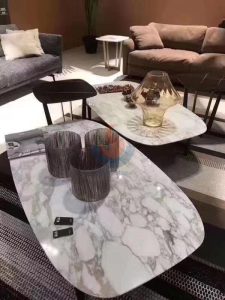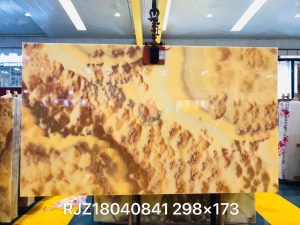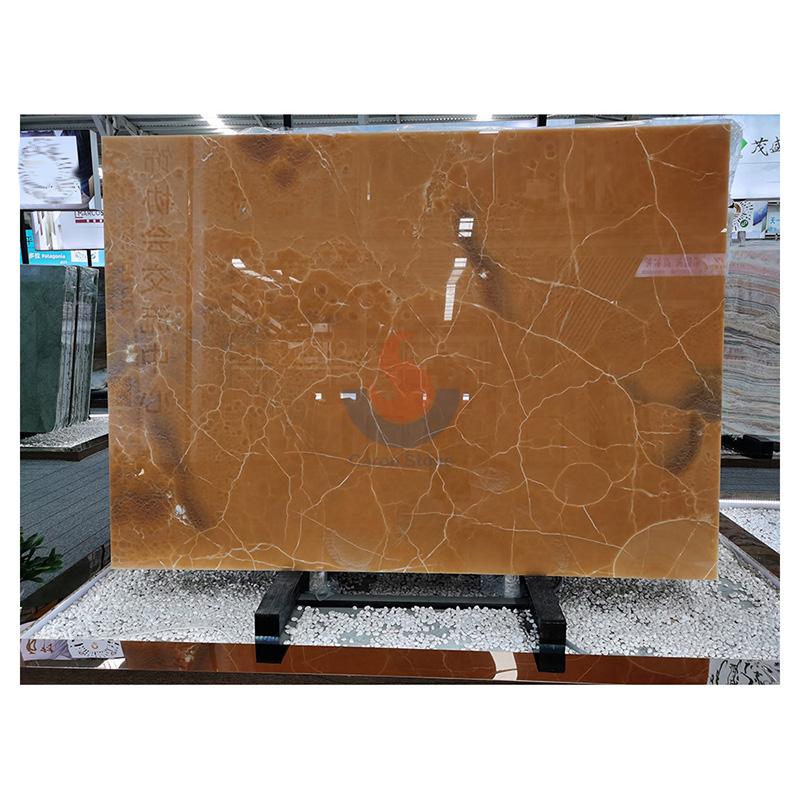In the field of modern architectural design, natural stone has become a material favored by architects and designers with its unique texture, durability and aesthetic value. In terms of utility, it can not only satisfy the several needs of current architecture but also provide the building a traditional and timeless attractiveness. The use of natural stone in contemporary architectural design will be discussed in this paper together with how it enhances the building’s aesthetic qualities and increases its utility.

Polished Italian Calacatta Altissimo Gold Marble
1. Aesthetic contribution of natural stone
Natural stone’s color, texture, and gloss provide modern architects rich visual components. Its natural beauty can highlight its unique aesthetic qualities and set the structure out in the urban setting. From magnificent private homes to great public buildings, natural stone may accentuate the architectural expression and visual impact of the construction in its own special manner.
2. Application in exterior design
Natural stone is extensively employed in exterior walls, roofs, columns and floors of modern buildings in their design. Its application guarantees the long-term beauty of the structure by means of its endurance, therefore improving the appearance texture of the construction. Furthermore, the variety of natural stone gives designers a great spectrum of design space, which enables them to select the most appropriate stone type and processing technique depending on the style and surroundings of the construction.
3. Combination of structure and function
Natural stone not only gives the construction visual appeal but also plays a significant part in structure and function because of its physical characteristics including wear resistance, pressure resistance, and great temperature resistance. For structural elements including load-bearing walls, floors, and ceilings, for instance, natural stone’s great strength and stability can offer appropriate support and protection. Its strong thermal insulating quality also helps to control indoor temperature and raise building energy efficiency concurrently.
4. Environmental adaptability and sustainability
Whether a scorching desert or a freezing arctic area, the great adaptability of natural stone helps it to fit to many climates and environmental situations, thereby preserving its performance and beauty. Simultaneously, its low maintenance cost and long service life indicate its sustainability, which satisfies modern building environmental protection criteria. Natural stone’s reuse and recycling help to lower the demand for fresh resources and lessen the effect of the building sector on the surroundings.
5. Integration of culture and history
Natural stone is also a respect and inheritance of culture and tradition in current architecture design. To produce architectural works with great cultural legacy, it can combine historical features and regional traits into modern construction. Many old structures and monuments, for instance, make use of locally native stones, nevertheless emblems of culture and art.
6. Innovative design and technology application
Natural stone application has gotten more and more varied and creative as design technology develops. For example, the application of 3D modeling and CNC machining technology enables stone to appear in architectural design in a more refined and complex form. These technologies give architects more creative space, thereby allowing them to produce more original and personal architectural works in addition to increasing the accuracy of design and processing.
7. Customization and personalized expression
Modern architecture aims for personalizing and customizing, thus the elasticity and individuality of natural stone make it the perfect material to reach this aim. To produce original architectural works, designers might alter the form, texture, and color of stone depending on client requirements. This customized service not only meets the special needs of customers, but also enhances the personalized characteristics and artistic value of the building.
8. Economic and cost-effectiveness analysis
Although natural stone may have a relatively high initial investment, its long-term durability and low maintenance cost make it very economical and cost-effective, especially in high-end construction projects. Natural stone often has significantly more service life than other building materials, and its maintenance and restoration expenses are rather minimal. Natural stone is therefore a very reasonably priced option over long run.
9. Maintenance and care
Natural stone requires simply frequent cleaning and inspection to maintain rather easy conditions. Apart from lowering long-term running expenses, this low-maintenance aspect guarantees the building’s ongoing function and beauty. At the same time, some modern sealing and protection technologies can also extend the service life of the stone and improve its weather resistance and anti-pollution ability.
10. Case study
By analyzing some famous modern architectural cases, we can have a deeper understanding of the application of natural stone in architectural design. For instance, natural stone is extensively used in many contemporary museums, art institutions, and business buildings. These structures not only show the beauty of stone but also reflect its sustainability and usefulness.

Mexican Yellow Cloud Onyx
The application of natural stone in modern architectural design fully demonstrates the perfect combination of its aesthetic value and functionality. Through its structural performance and environmental flexibility, which satisfy the several objectives of current architecture, it not only provides special visual effects to the structure but also offers Natural stone will be used more widely and in-depth as design technology and processing technology evolve constantly, so contributing more to the creativity and growth of contemporary architecture. Looking to the future, natural stone will continue to be an indispensable and important element in modern architectural design with its unique charm, providing unlimited possibilities for creating a beautiful, practical and sustainable architectural environment.





